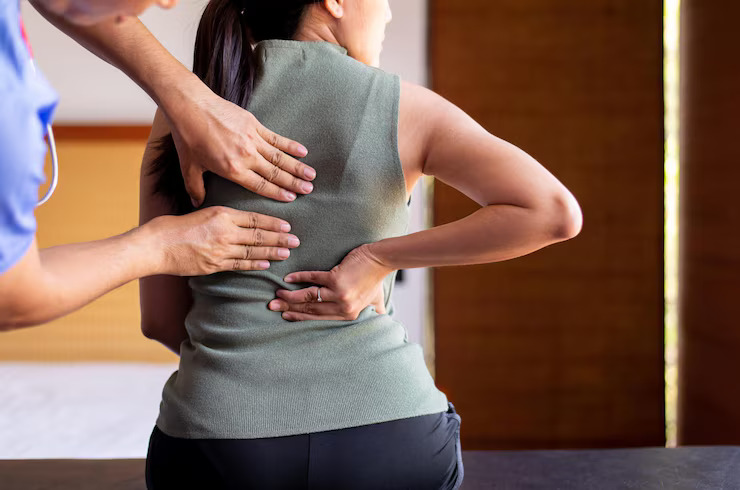
Lower back pain is a common problem that affects many people, including office workers and athletes. Various factors, including poor posture, muscle imbalances, or injuries, can cause it. Fortunately, rehabilitation exercises can significantly alleviate lower back pain and improve overall back health. Here’s a simple, personalized guide to help you understand and practice effective lower back pain relief exercises.
Understanding Lower Back Pain
Before diving into the exercises, it’s essential to understand the nature of lower back pain. This pain can be acute (short-term) or chronic (long-term), often stemming from muscle strain, ligament sprain, or issues with spinal discs. Common causes include:
- Poor Posture: Sitting or standing improperly can strain the lower back.
- Lack of Exercise: Weak muscles can’t support the spine effectively.
- Injuries: Sudden movements or accidents can lead to back pain.
- Chronic Conditions: Issues like arthritis or disc degeneration can cause persistent pain.
Importance of Rehabilitation Exercises
Rehabilitation exercises are crucial because they:
- Strengthen Muscles: Stronger muscles provide better support to the spine.
- Improve Flexibility: Flexible muscles and joints reduce the risk of injury.
- Enhance Posture: Good posture minimizes strain on the lower back.
- Promote Healing: Regular exercise improves blood flow, aiding healing.
Getting Started with Exercises
It’s crucial to meet with a healthcare provider before beginning any exercise program, particularly if you suffer from chronic or severe pain. Once you get the green light, you can start incorporating these exercises into your routine.
1. Pelvic Tilts
Purpose: Strengthen the lower abdominal muscles and relieve lower back tension.
How to Do It:
- Lie on your back with your feet flat on the ground and your knees bent.
- Flatten your lower back against the floor and tense your abdominal muscles.
- Hold for a short while before letting go.
- Ten to fifteen times, repeat.
2. Cat-Cow Stretch
Purpose: Improve flexibility in the spine and relieve tension in the lower back.
How to Do It:
- Start on your hands and knees in a tabletop position.
- Inhale, arch your back (cow position), and lift your head and tailbone towards the ceiling.
- Exhale, round your back (cat position), and tuck your chin and tailbone.
- Repeat 10-15 times, moving slowly and smoothly.
3. Knee-to-Chest Stretch
Purpose: Stretch the lower back muscles and relieve tension.
How to Do It:
- Lie on your back with your feet flat on the ground and your knees bent.
- Grasping one knee with both hands, raise it to your chest.
- After 20 to 30 seconds of holding the stretch, switch legs.
- Two to three repetitions per side.
4. Bridge Exercise
Purpose: Strengthen the gluteal muscles, hamstrings, and lower back.
How to Do It:
- Lie on your back with your feet flat on the ground and your knees bent.
- As you raise your hips toward the ceiling, contract your glutes and use your core.
- Hold for a short while before lowering yourself gradually again.
- Ten to fifteen times, repeat.
5. Child’s Pose
Purpose: Stretch the lower back and hips, promoting relaxation.
How to Do It:
- Get on your hands and knees to begin.
- Lower your chest to the floor, stretch your arms forward, and sit back on your heels.
- Breathe deeply while you hold this position for 20 to 30 seconds.
- Do this two or three times.
6. Bird-Dog Exercise
Purpose: Improve stability and strengthen the lower back, core, and glutes.
How to Do It:
- Start on your hands and knees in a tabletop position.
- Maintaining a straight back, extend your right arm forward and your left leg back.
- After a brief period of holding, go back to the initial position.
- On the other side, repeat.
- Do 10-15 repetitions on each side.
7. Seated Forward Bend
Purpose: Stretch the lower back, hamstrings, and calves.
How to Do It:
- With your legs out in front of you, take a seat on the floor.
- Reaching for your toes, slowly lean forward at the hips.
- Hold for 20-30 seconds, then slowly sit back up.
- Repeat 2-3 times.
8. Hip Flexor Stretch
Purpose: Stretch the hip flexors, reducing strain on the lower back.
How to Do It:
- Kneel on one knee with the other foot in front, creating a 90-degree angle.
- Push your hips forward slightly, feeling a stretch in the front of the hip.
- Hold for 20-30 seconds, then switch legs.
- Repeat 2-3 times on each side.
Tips for Effective Rehabilitation
- Consistency: Regular practice of these exercises is key to seeing improvement.
- Listen to Your Body: Avoid pushing through pain; if an exercise hurts, stop and consult a professional.
- Combined with Other Treatments: Physical therapy, massage, and proper ergonomics can enhance your recovery.
- Maintain Good Posture: Be mindful throughout the day to prevent further strain.
When to Seek Professional Help
While these exercises can be highly effective, there are times when professional help is necessary. Seek the advice of a healthcare provider if: If you live in Seawoods and are considering physiotherapy, visit IVORY PHYSIOTHERAPY CLINIC. Our skilled physiotherapists offer expert care, including convenient home physiotherapy services in Seawoods. Start your journey to better health with us today.
- Your pain persists or worsens despite regular exercise.
- You experience severe pain, numbness, or weakness in your legs.
- You have a history of spinal issues or significant injuries.
Conclusion
Although lower back pain can be extremely disabling, you can increase your mobility, reduce discomfort, and improve your general quality of life with the correct rehabilitation activities. Include these workouts in your regular routine, and always remember to pay attention to your body’s needs and see a specialist when necessary. With patience and diligence, you’ll be well on your way to having a pain-free, healthier back.







